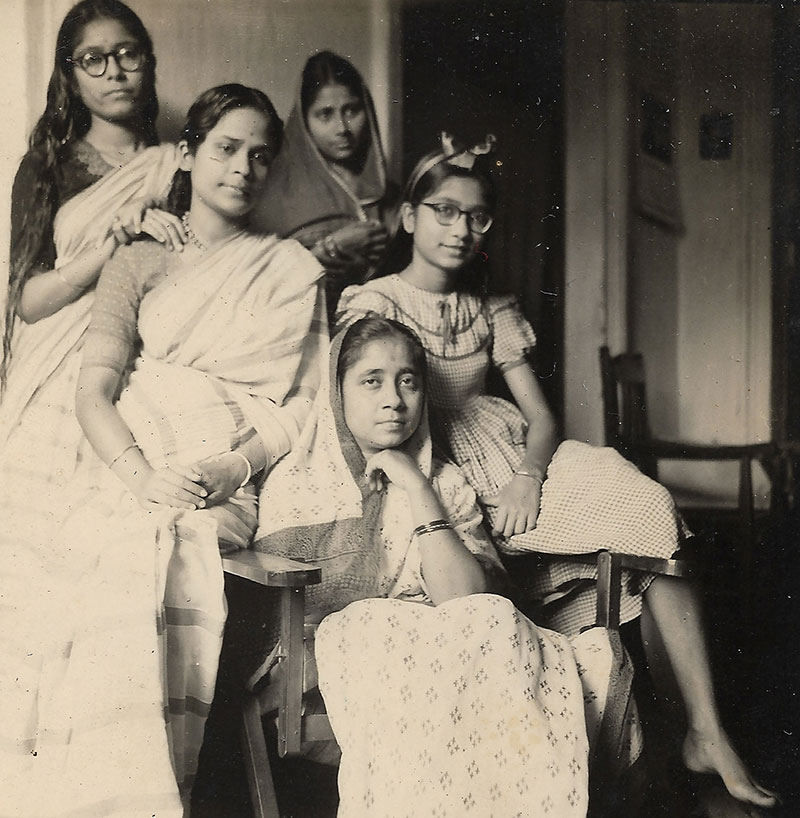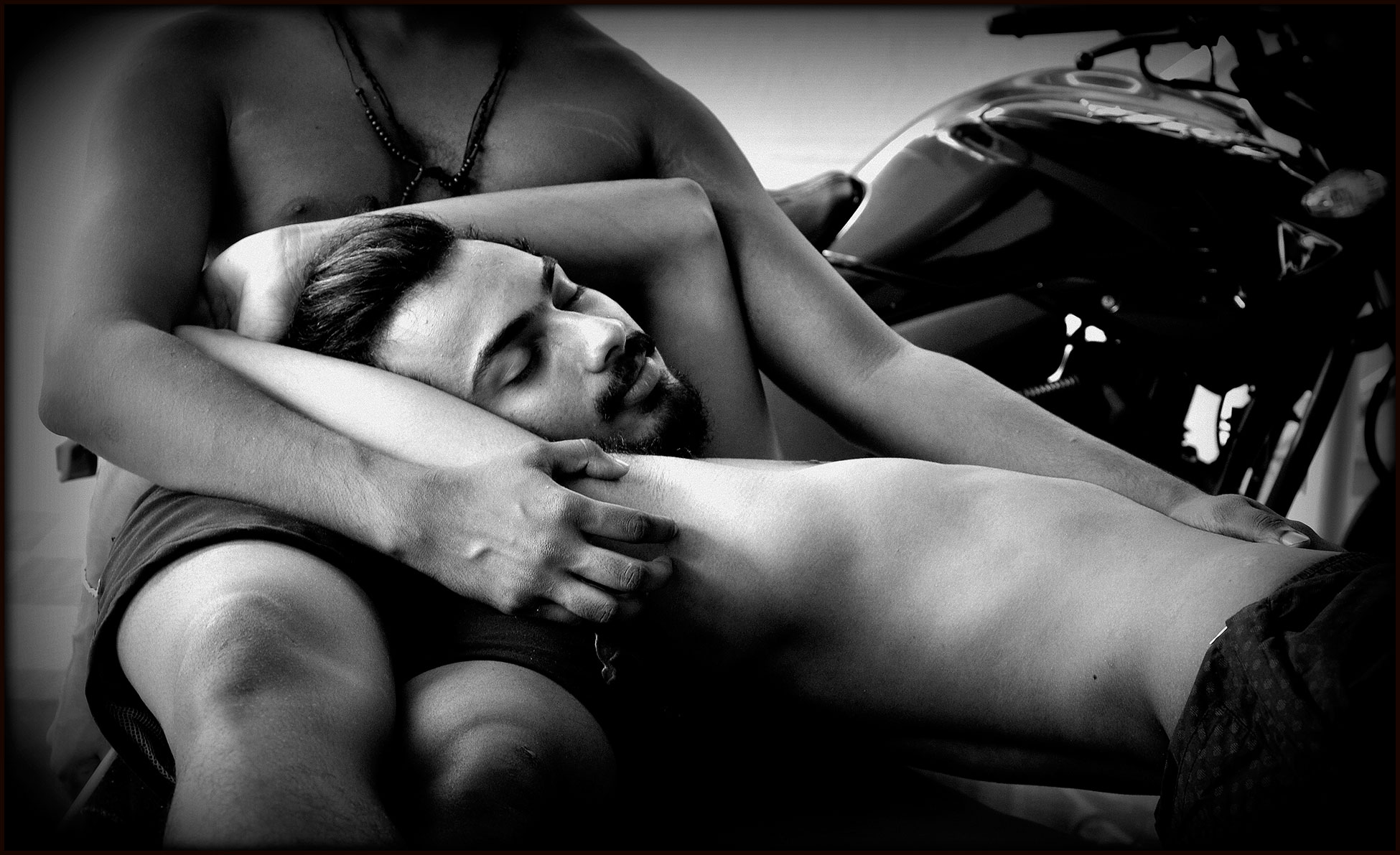Zoom In
Portfolio Review
PhotoMail constructively and
Critically zooms into
The life and work of photographers
Its art and techniques
Contemporary theory
Aesthetics, material philosophy and
Sociology
Riyas Komu
reviews
Shibu Arakkal‘s Mallaah
Photo Series
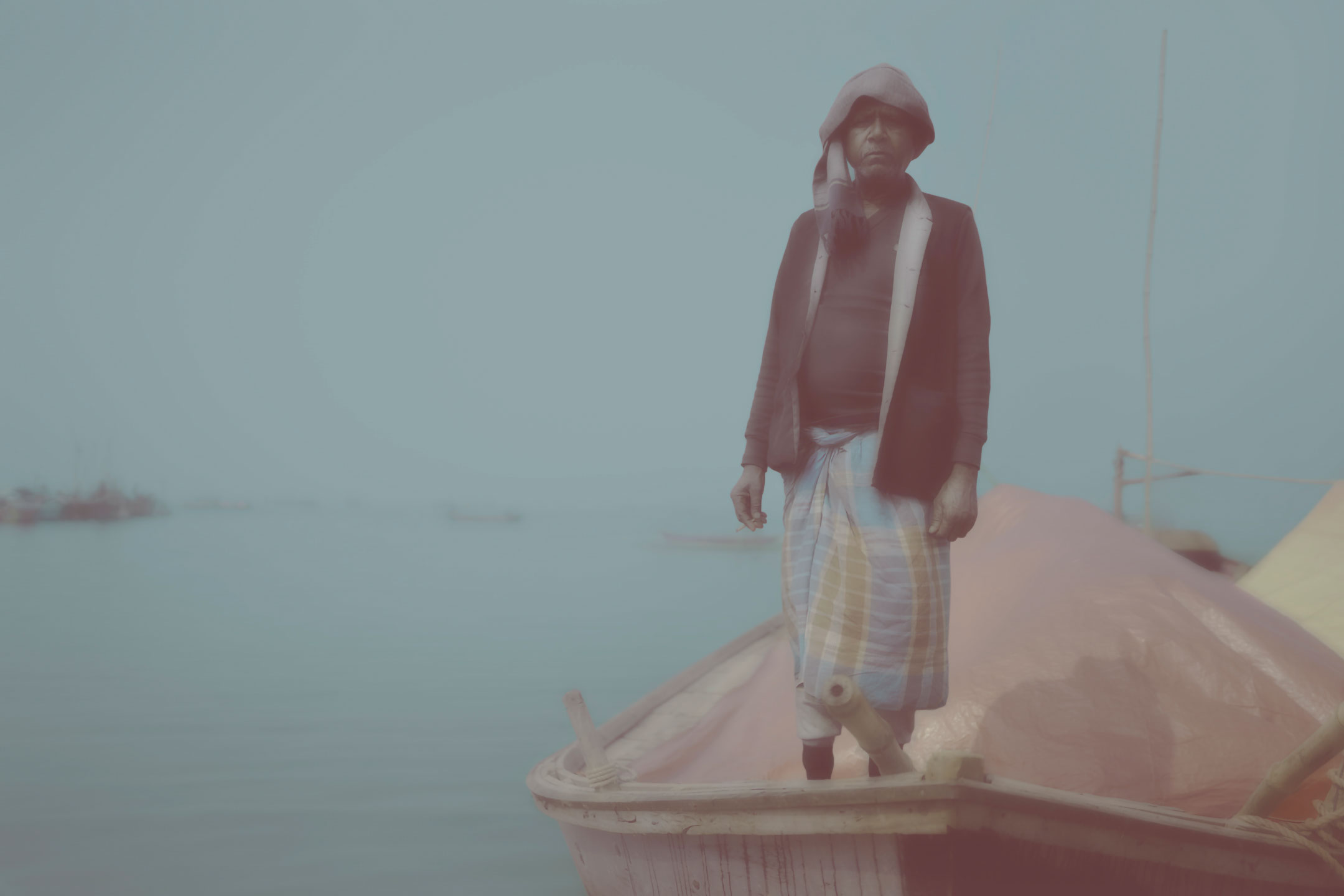
Mallaah © Shibu Arakkal 2019
Mallaahs, the boatmen of Gangetic geography
A Photo Art Series by Shibu Arakkal
By Riyas Komu
In the most revered of Hindu traditions, the confluence of the three holiest rivers of India, the Ganga, the Yamuna and the Saraswati is one of four celebrated earthly sites of the Kumbh Mela. This confluence, the Triveni Sangam at Prayagraj (erstwhile Allahabad) has from the beginning of its tradition, brought together a gathering of humanity like no other on earth.
My line of artistic enquiry for over two decades has almost obsessively been preoccupied with my philosophical journey and my own personal truths.
Being present, in arguably the most philosophical place on earth at that earthly time, I found myself drawn to the rivers themselves and profoundly, to a people who have traveled on it all their lives. A great disbeliever in coincidence, I and my own journey crossed paths with the boatmen of these holy rivers. An origin of people called Mallaah, these exclusively male ferriers of people are a deeply compelling part of the Kumbh story.
For several hundred years these boatmen on the Ganga and the Yamuna have handed down their oars from father to son. I was intensely drawn to the purpose of their lives, to carry people back and forth on these rivers. Almost married to their boats, these men. To live almost all of their lives on these wooden vessels, going about their worldly chores and belonging to a tribe of menfolk, they pride themselves on being the real caretakers of these mystical rivers. Almost as if they are born on these boats and just as possibly may breath their last on it, the Mallaah men live lives removed from their families and children.
My series of photographic artworks are born from these very people and a journey that is so relevant to the Kumbh story and that of these rivers. It is a reality I trace in relation to my own response to it and an understanding of these people and to not try and interpret something that I might never incisively understand. But to create from their very stark reality and from a sociological perspective that is complex and yet as much rooted to this land and waters as much as all the sages and this ancient faith.
The series titled ‘Mallaah’, simply put, is a series of portraits of the boatmen who ply their trade on the Ganga and the Yamuna, imagined in the great artistic traditions of the last century, depicting people and their lives.
I have chosen to depart from my recognisable artistic techniques and to take a more direct and hopefully, a visually dynamic viewpoint. My conscious approach was to keep it true to a realism that is authentic, whilst leaning towards the poetic. It was also intentful for me to stick to spontaneous compositions and lighting of the subjects, inspired by the work of some early twentieth-century Pictorialists.
The works themselves have been conceptualised through a story-telling visual technique, and still maintaining a distinct demarcation from the photojournalistic genre, also critically preserving the realness of the subject. While consciously meaning to be less interpretative and more authentic to a photographic realism, I am as always, coming from an artist’s style and viewpoint.
This series ‘Mallaah’ was commissioned by the Sandeep and Gitanjali Maini Foundation. The series is part of the foundation’s private collection.
– Shibu Arakkal
“We had long heard tales of whole worlds that had vanished, of empires sunk without a trace, gone down with all their men and all their machines into the unexplorable depths of the centuries, with their gods and their laws, their academies and their sciences pure and applied, their grammars and their dictionaries, their Classics, their Romantics, and their Symbolists, their critics and the critics of their critics… We were aware that the visible earth is made of ashes, and that ashes signify something. Through the obscure depths of history we could make out the phantoms of great ships laden with riches and intellect; we could not count them. But the disasters that had sent them down were, after all, none of our affair.”
—Paul Valery- The Crisis of the Mind
In the techniques of seeing, there may be contradictory and irreconcilable ways of arriving at the truth of images depending on the stages of life – infancy, middle of life, and late age. Confronted with an image, a child would always point fingers at the facts of what he sees in these photographs: a boat, an old man, a child, a river flowing in the distance, weeds, bamboos, ropes. The child’s immediacy still connected to the memory of breastfeeding and the limited and damaged understanding of language does not allow him to interpret images in the sense of history, worldliness, science of techniques, authorship and so on. All these we may consider as amateurish and infantile. Yet in its infancy, the child’s seeing of the image is a beginning point of understanding the phenomenon of light, texture, darkness, and the visible aspects of the story that is not yet there. Tired at looking at the image, the child may wish to deviate from the image, call her mother and say, ‘this is a boat,’ ‘that is an old man’, ‘old man’s hair is white,’ ‘this is a child and the father,’ ‘this is a chair,’ etcetera, etcetera. What the child in reality points at is the pure sensitivity of the objects, places, faces, colour, which in the course of attaining a mastery over language fades into abstractions and jargons. In all of this, particularly, in the ways of seeing like this, each object in the photographs yields and appears to the child in all its fullness. There is the innocence of looking at the world unbeknownst of all the conflicts of faculties.
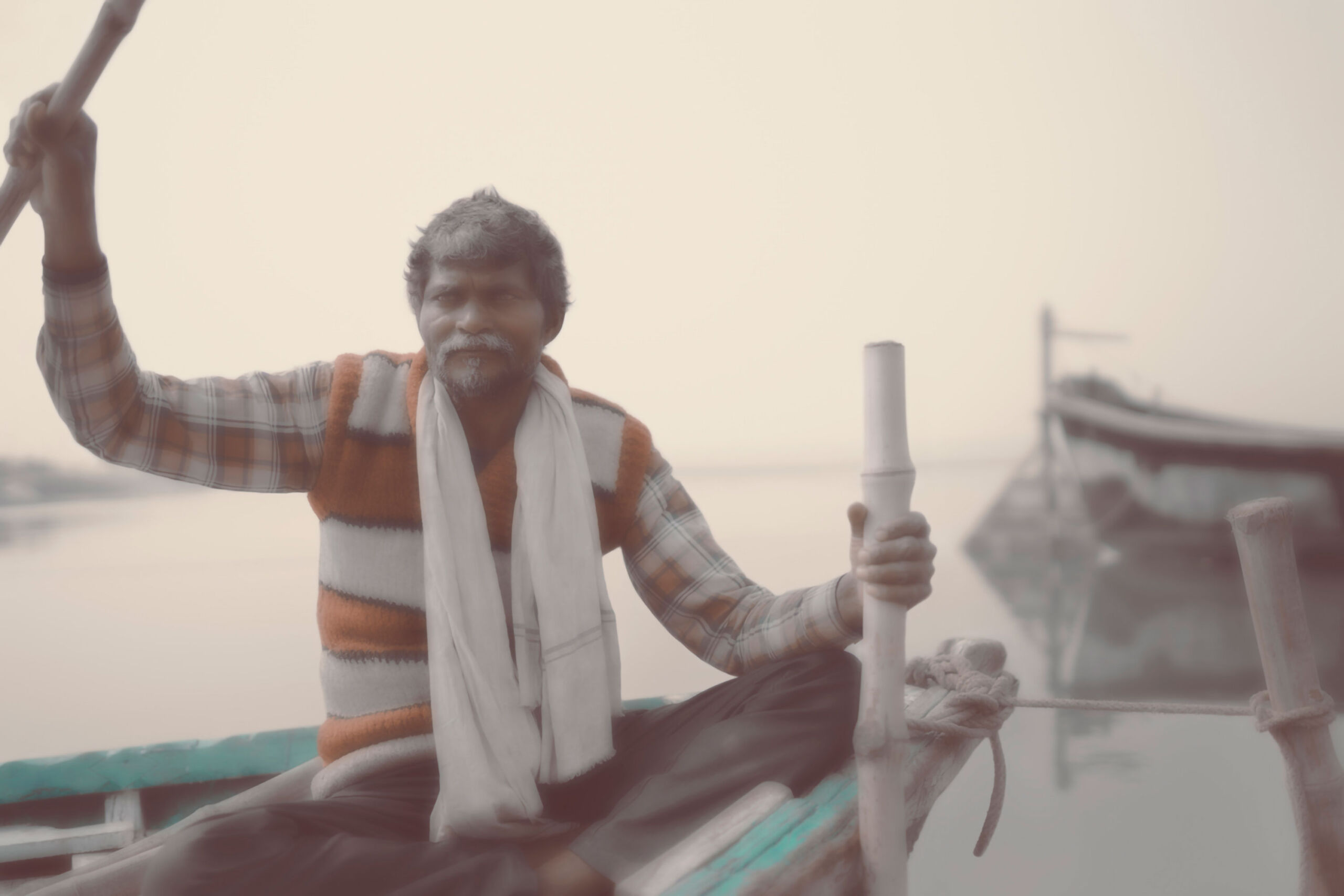
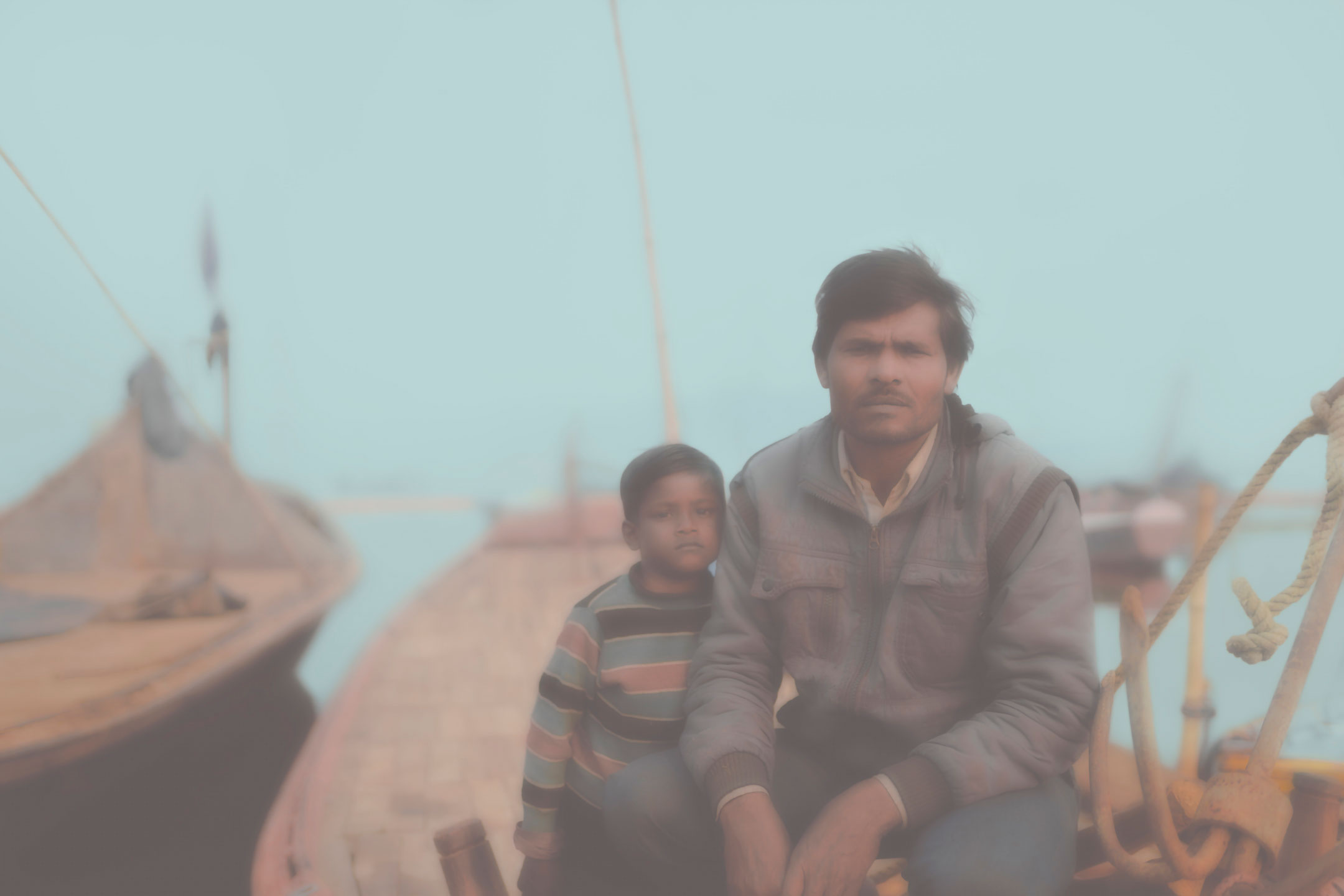
Mallaah © Shibu Arakkal 2019
Passing the stage of the childhood from adolescence to the middle of life, a period of transformations and immense conflicts of opinions, ideas, ideology and thought, the ways of seeing is characterised by what is ‘dictated’ to him from the available industry of language, politics, and signs – facades of culture and civilisation against the very nature of childhood. In abandoning the child in him/her, the middle aged individual while departing from the pleasurable attachment with the mother, seeks confidence in the world, it’s ideas and ideals, and tries a hand in the interpretation of images, signs, photos, words, and other phenomenon with a scalpel like precision of a surgeon in the operation theatre – all in vain. It’s in this age that the scars of the world represented in photographs and other ways of seeing, begins to appear. The structure of damaged life is never visible as it is in the middle of life. Seeing the work of Shibu Arakkal, I am overwhelmed by the way in which his technique of making the shades of scars visible, that of history of an abandoned community as it is passing into oblivion before our very eyes. From a purely cultural point of view, that is the world of public opinion, ideas, and ideologies, these images may become a part of the archive of the forgotten world, but from the natural point of view, that is from the point of view of nature: decay and disintegration of old world and civilisation, we are actually saddened to see that an age which was so much engraved in water, wood, hyacinths, and crafts of hands has reached the verge of death, which is precisely the way of seeing as one is growing old, when the blackness of hair, stiffening of skin and muscles gives way to its natural habitat – death pointing towards the grave. Shibu Arakkal’s image may be seen from all of these registers of age as one traverses from infancy to maturity, by way of death and beyond.
Coming back to the way of seeing as a child, one also witnesses a drift akin to stubbornness and refusal to obey the norms of governmentality. The child would point fingers towards the unknown direction. The child drifts away from the prevalent norms, signs and behavioural codes of parenting. In a general sense, historical and cultural phenomenon may also be seen and worked through from the point of view of a certain drift in the ways of being and seeing. Shibu Arakkal’s works as I see it, is a drift from the popular ideas of consumption and cultural codes. As a subject matter, his choice of working with the Mallahs of Gangetic geography and landscape suggests to us that the acts of seeing, witnessing, photographing and documenting lives can also be done through a fourth eye. As a photographer, he does not allow for ready consumption of his work, but poses serious questions by way of his technique, that is making the subjects disappear from sight, making them appear in the psychic space of mind, posing questions before the viewer – how do the dominant ideas of ‘national culture’ exclude and push people into a landscape of existential and social crises. The idea of photography like this seems to me closer to the idea of painting where reality is presented before us in a diffracted way. I am very pleased to partake in his endeavours of technique, labour, craft and a way of seeing which reminds us of the limits of reason, culture, thought, and contemporary politics, as we see from the point of view of mortality of bodies and languages, as Paul Valery, a prominent critic observes in his essay, Crisis of the Mind – “We later civilisations… we too know that we are mortal.” Valery’s line as dipped in poignancy reminds us of the limits of our cultural logic as we too who pride ourselves in walking over the earth, mutilating it, will pass into oblivion like the past cultures and civilisations, leaving nothing but the faint memory of bones feeding a termite and a jasmine plant.
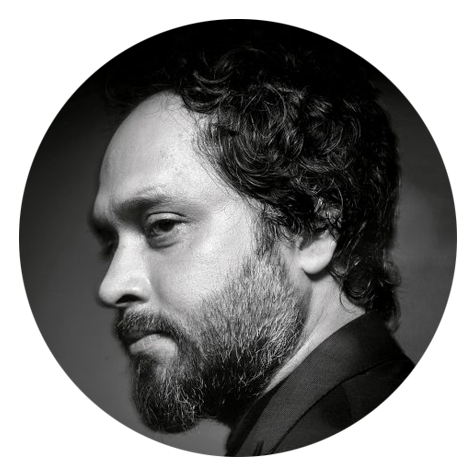
Riyas Komu is a critically acclaimed multi-media artist and curator. He co-founded Kochi-Muziris Biennale, Asia’s largest contemporary art festival, and curated its first edition. He has curated several other major International shows and his works have been exhibited in reputed museums across the world. He lives and works from Mumbai.
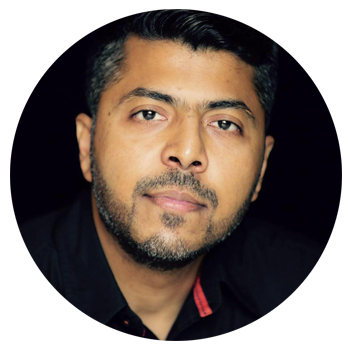
Shibu Arakkal is an award-winning photo-artist who has garnered international recognition for his conceptual work and a unique philosophical viewpoint which unifies a diverse range of works shown in over 50 exhibitions, spanning a career of over 25 years. Arakkal is one of the few Indians to have been awarded the prestigious ‘Lorenzo il Magnifico’ Gold Prize in Digital Art for his work from his series ‘Constructing Life’ at the Florence Biennale 2013 in Italy.
Published on December 17, 2021
Share
Related Articles

In my taxi, when a photo artist becomes a cab driver
What motivated Weideman to keep photographing? The answer to this is also an important quality that makes his photographs intriguing. He continued shooting even though he was not exhibiting nor getting into any sort of limelight until the mid-90s. Passion for the medium, of course. But there is more.
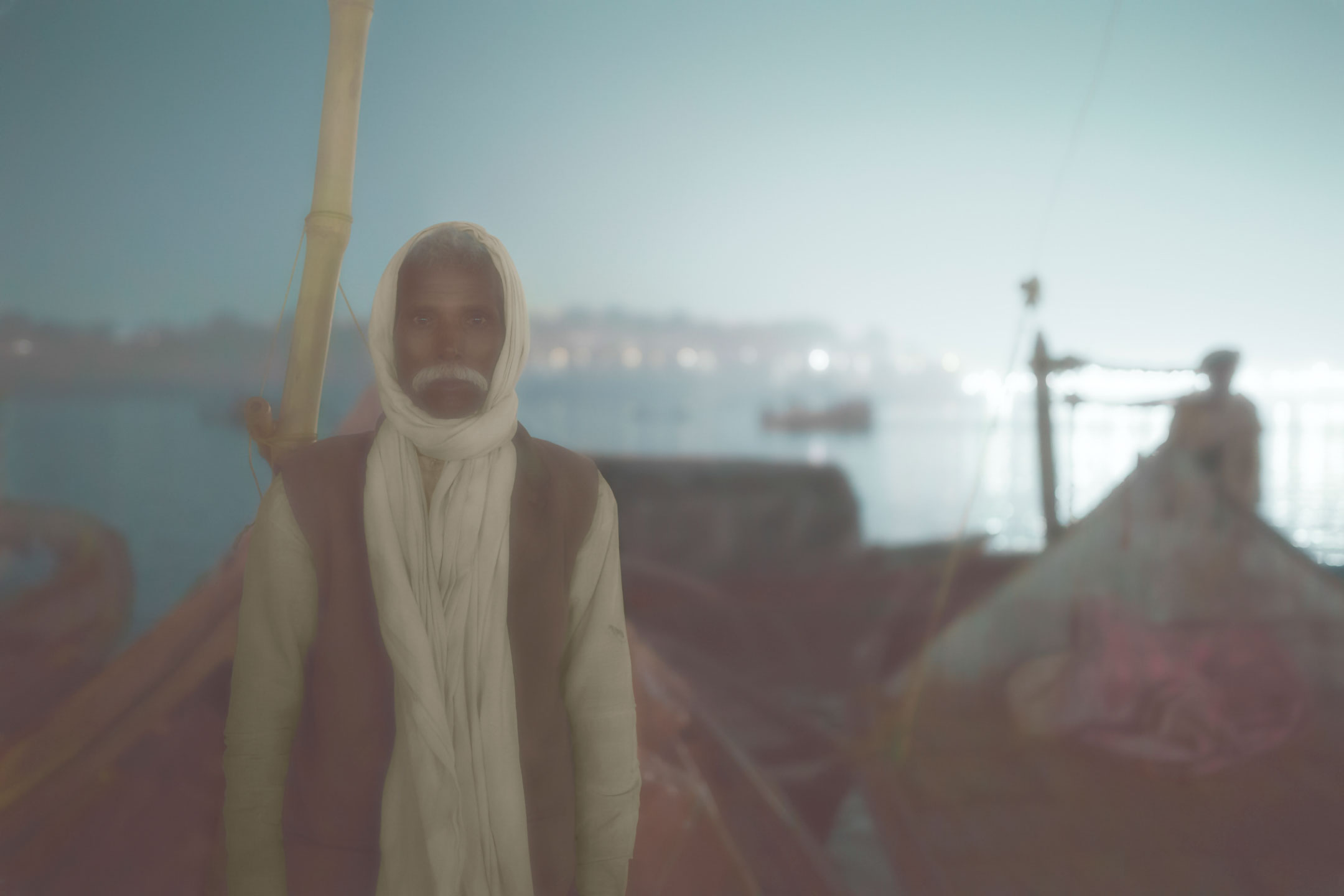
Mallaahs, the boatmen of Gangetic geography, A Photo Art series by Shibu Arakkal
Review of Mallahs, the boat of Gangetic geography, photographic series of Shibu Arakkal. For several hundred years these boatmen on the Ganga and the Yamuna have handed down their oars from father to son. I was intensely drawn to the purpose of their lives, to carry people back and forth on these rivers. Almost married to their boats, these men. To live almost all of their lives on these wooden vessels, going about their worldly chores and belonging to a tribe of menfolk, they pride themselves on being the real caretakers of these mystical rivers. Almost as if they are born on these boats and just as possibly may breath their last on it, the Mallaah men live lives removed from their families and children.
In search of the lost home
Across the world there are ongoing attempts to construct a ‘people’s history’ through photographs. Memory Projects, they are fondly called, focus mainly on the pre-digital era when photography was not as common as today. Bengali photographer Anandarup Goswami’s photography series ‘A Home of No Return’, though not directly linked with any memory project, shows certain resemblances with the latter’s style, and yet carries its own soul. A Home of No Return visually narrates the past and the present through a mixture of faded and fresh photographs.
Homomorphism II
The LGBTQ community has found for itself public spaces in urban regions. We will wait and see what they want to tell the world from that space. After all, solidarity with the cause does not mean solidarity with the acts, and it is time for the community to begin to act convincingly. This exhibition is a good starting point, and further on, there is a desperate need for clarity on the part of the activist-artists.

Elements and Fragments, Uncovering Narratives of a Temple Town
Inasmuch, every photographer that ever visited Tiruvannamalai never took notice about anything other than Ramana and the Annamalaiyar temple – their eyes glossing over everything else and their focus devoted entirely to the two ‘divine’ icons. But, there remains a Tiruvannamalai beyond, which has gone unnoticed and undocumented – invisible to the colonial gaze that is pre-occupied with its exotic fairy tales, and underwhelming for the photojournalist due to its perceived mundane-ness.


